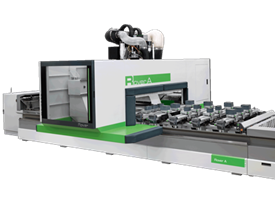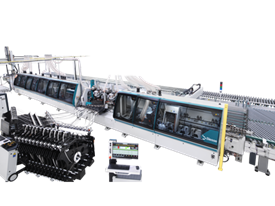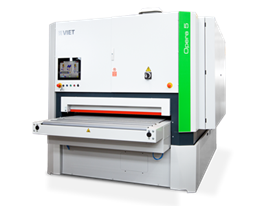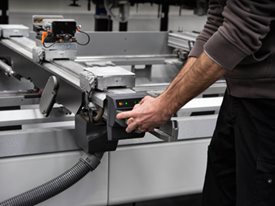Optimization of production is crucial for industrial tasks refinement. And when properly implemented, these streamlined procedures result in increased productivity. But what links them together? And why is manufacturing process optimization so important for increasing efficiency?
The effectiveness of a given activity holds the key to the solution. Producing a lot of things is insufficient. To identify the with the least amount of input, the tasks, checks, changes, and motion necessary for creating final goods must be planned.
This is described as "a route to continuous improvement" by several businesses. And in the majority of production activities, the machine serves as the focal point of this approach. Because of habit and training, people who work with their machines include operators, mechanics, and technicians.
The majority of their efforts are focused on achieving the highest uptime possible. However, the efficiency of their activities is what matters, not whether the data is manual or electronic. Process optimization is the process of making changes to interaction to increase its effectiveness.
Understanding Optimization of Production
The goal of production optimization is to boost productivity throughout the manufacturing system. Models, analysis, prioritisation, and measurements are used in production optimization to boost output. Production optimization aims to improve the system as a whole.
To optimise the physical performance and configuration of the complete production system, it may employ models based on real-time data to examine flow rates, machine architecture, labour usage, and other aspects.
The following actions will be part of production optimization:
- A shifting industrial floor plan
- Altering or rearranging equipment at the point of usage
- Putting new WIP practices in place
- To break bad habits, operators and technicians should receive training on how to handle automated alarms and monitoring system knowledge.
- Establishing new internal delivery protocols for inventories
- Monitoring and HMI layout evaluation
Understanding Manufacturing Process Optimization
The goal of Manufacturing Process Optimization is to improve the efficiency of the final product throughout the process. Equipment, staging spaces, inventory protocols, facility layout, transportation, and other factors are all included in this optimization.
Process optimization eliminates pointless stages in a particular process step within the production system, which is the main distinction between it and production optimization.
Process improvement will involve actions like:
- Identifying issues that are particular to the process
- Creating the desired state by analysing the current state
- Checking the outcome of the adjustment
- Keeping an eye on the change to ensure its success
Techniques for Optimization of Production and Manufacturing Process Optimization
There are numerous options for manufacturers trying to increase the effectiveness of their processes:
1) Real-Time Machine Data Collection
Traditional process tracking typically involved manually filling out paper forms and entering data into Excel. This required a lot of time and was challenging to maintain. Additionally, analysis frequently relied on human understanding, which was susceptible to bias. For this reason, businesses are beginning to go paperless.
Real-time data collection and contextualization enable insights for production optimization that were previously impossible. These insights can enable a proper knowledge of production progress and equipment performance on the shop floor. SOPs may be adjusted more quickly and lead to higher quality efficiency and greater production when dashboards and pertinent production analysis and data are available.
2) Analysis of bottlenecks
Every management is aware of a bottleneck and the threat it poses to the production process. And the majority can pinpoint a few crucial areas in their workflow where these obstructions take place. However, real-time data can also give insight into bottlenecks that might or might not be visible, just as it does with insights and solutions to optimise the process at a machine level. When data indicates that there is another cause, human operators may nevertheless assign a backup to the first cause.
Machine and process data can locate bottlenecks and limitations throughout the entire ecosystem with real-time data and analytics. With the use of this data, operators can monitor operations and concentrate on the bottlenecks that result in the most downtime.
3) Downtime Evaluation
The areas that need to be fixed right away can be highlighted via a machine downtime analysis. Managers and operators might start with the worst offender by sorting the downtime data that was gathered by reason. The ability to access and query the data, however, to comprehend the cause, is crucial to this research.
3) Statistical Analysis
Predictive analytics, one of the most useful techniques when employing data-driven applications, can accelerate your workflows. This program analyses machine data to identify problems and forecast failure. Additionally, because it can connect every piece of equipment on a shop floor, predictions about the entire ecosystem can be formed and remedies for problems that the firm is interested in can be deployed more swiftly, if not instantly. The same is true for sectors with a substantial environmental impact, like oil and gas production.
This was a detailed guide on optimization of production & practical optimization of the manufacturing process.



.png)





 Worldwide
Worldwide
 Italia
Italia
 United Kingdom
United Kingdom
 Россия
Россия
 France
France
 中国
中国
 Asia
Asia
 Deutschland
Deutschland
 España
España
 Schweiz
Schweiz
 North America
North America
 India
India
 Australia & New Zealand
Australia & New Zealand
 Türkiye Cumhuriyeti
Türkiye Cumhuriyeti
 Middle East
Middle East
 Brasil
Brasil